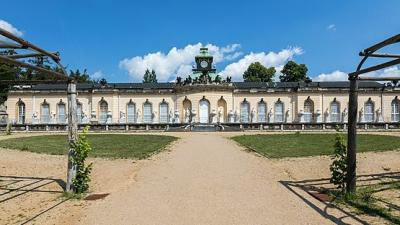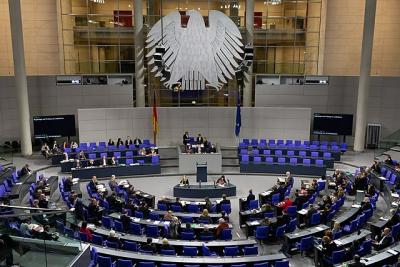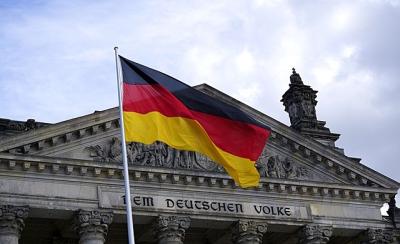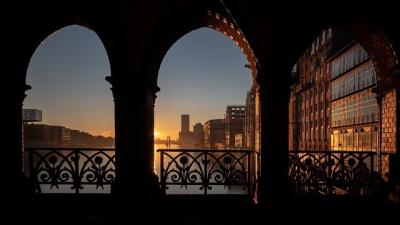Many would give their eye teeth for the genuine Caravaggio that hangs in the Sanssouci Picture Gallery. It is the famous depiction of Thomas grasping the wound of the Risen Christ. The "Infidel Thomas" is one of two remaining Caravaggio paintings in Berlin. But while "Amor vincit omnia" (Cupid as Victor) will continue to be on view in the Gemäldegalerie at the "Kulturforum Potsdamer Platz", one of the masterpieces of Baroque painting may be inaccessible in the future.
The Caravaggio is not the only painting affected. In fact, the entire Sanssouci Picture Gallery is to be closed to visitors from next year. This gallery was the personal collection of King Frederick II of Prussia and his successors, and is not to be confused with the Berlin Picture Gallery. Frederick wanted to meet Prussia's pent-up demand for art and culture by sending agents all over Europe to bring precious paintings to Potsdam. Caravaggio is considered the most famous painting, but works by Rubens, van Dyck and other famous Italian and Flemish painters also hang in the royal retreat. Frederick's greed for exquisite art, however, led the Prussian to acquire many a falsely attributed painting. So there were many a fake Titian or da Vinci in the cabinet. Some of the highlights of art history have also been relocated to one of the Berlin galleries in the last two centuries.
Nevertheless, the Sanssouci Picture Gallery has its charms. Most visitors overlook it, as it lies like a garden house somewhat removed from the palace proper. In the summer, the entrance was difficult to find because of the rebuilding scaffoldings, and some tourists thought the house was already closed. The gallery offers something that only few galleries can still offer: like in the 18th century, frames are puzzled together. This gives visitors an impression of what most art galleries looked like before the 19th century: as close-fitting collections. The individual painting has to fight for its place because of its exceptionality. The Caravaggio does well in that competition. Although you think it might be lost in the sea of images, its chiaroscuro shimmers out and calls to the visitor. It is unlike any other painting. Other paintings need their own spaces and free walls.
Why are the exhibits now disappearing into the mothballs? We may find it hard to believe, but simply for reasons of cost. Inflation and price increases are eating up culture. There is talk of savings of up to 300,000 euros. While the Bundestag debates how to install one heat pump after another in every corner of the republic and spend billions and billions to save the climate, the nation's cultural treasure falls victim to foundation planning because of a comparably small amount. It is not possible to move the paintings to other museums.
You might think it's a typical Berlin farce, but it sheds a telling light on Germany as a cultural centre. When people talk about "culture" in Berlin, they mean street festivals, Christopher Street Days or self-actualising small artists. Millions flow to green climate NGOs and into federal funding. The present is once again superior to the past. Ideologically as well as artistically. Though little will remain of all the graffiti and modern art in 400 years, while a Caravaggio attracts people over hundreds of kilometres, people just don't want to understand this. Despite the fact that Caravaggio's biography is clearly more marked by light and shadow, tension and sacrifice, than the well-behaved life of the green juste milieu.
The Germans have thus found their way back to their Prussian nature, which combines a sense of purpose and efficiency. Even Sanssouci itself is a civil servant's room compared to any Italian palazzo. The Electorate of Cologne's Augustusburg Palace in Brühl exudes more splendour than the Prussian desk room, not to mention the splendour of Schönbrunn. But the "Old Fritz" had at least tried to break through the philistinism of his predecessors somewhat by trying to tie in with European standards through the picture gallery. With the closure of the Sanssouci Gallery, we will return to pre-Friderician times.
It would be an exaggeration to once again invoke the downfall of the Occident, but the departure of Caravaggio clearly shows how much one thinks of the Occidental heritage. Civilisation preserves a heritage with which it no longer identifies; the preservation of art is mere ritual if the background unknown. We have reached the point where one no longer even sees the implications of the process. Ancient sculptures were not so much victims of a "big bang", such as destruction by marauding vandals, but were rather annihilated by the next lime burner who destroyed them out of simple everyday needs. Anyone who does not know what he is doing when he locks away "Thomas", and who also does not know what he is missing when he allows this locking away, already belongs to a Fellach culture.
Read also
The AfD: Caught between Realpolitik and Dreaming
Things are actually going well for the AfD. The right-wing nationalist party is soaring in the polls and is potentially the third strongest party in the country. It has had to do little to achieve this.
Marco Gallina
A King for Germany
King Charles III visited Germany, continuing thus a line of tradition established by his mother. Not so much the visit itself, but rather the reactions to it cast a telling light on Germany in particular, and Europe in general. Monarchy, one could have the impression, is actually something that belonged to the Middle Ages.
Marco Gallina
Country Report: Germany Faces Loss of Prosperity
Despite the economic downturn, citizens are threatened with new taxes and hidden levies, for example through a reform of the heating law or the CO2 tax.
Marco Gallina
German Conservatism and the Dying Idea of Europe
For centuries, Germany was criss-crossed by a wall.














Comments (0)